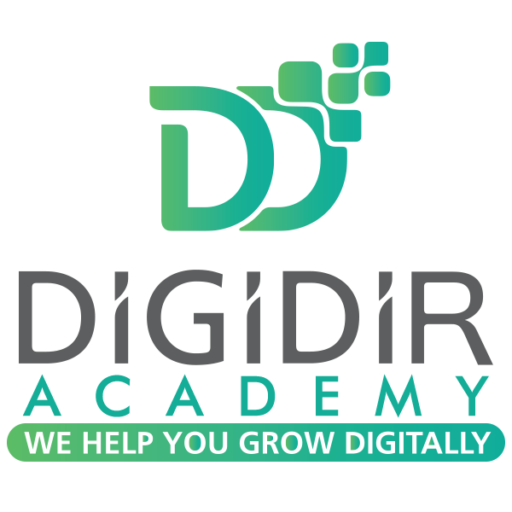How to Analyze the Competition in Digital Marketing

In the fast-paced world of digital marketing, staying ahead of the competition is crucial for success. Understanding your competitors’ strategies, strengths, and weaknesses can give you valuable insights to refine your own marketing efforts. Whether you’re a business owner, a marketing professional, or a student pursuing a digital marketing course, learning how to analyze the competition effectively is a critical skill.
This article will guide you through the key steps involved in analyzing the competition in digital marketing and help you implement winning strategies that can set you apart from the rest.
1. Identify Your Competitors
The first step in analyzing the competition is identifying who your competitors are. Depending on your industry and niche, your competitors can vary significantly. Competitors are usually divided into two types:
- Direct Competitors: These are businesses that offer the same or similar products/services as you. For example, if you’re offering an SEO tool, companies like SEMrush or Ahrefs would be your direct competitors.
- Indirect Competitors: These are businesses that don’t offer the same products/services but serve the same target audience. For instance, if you provide content marketing services, an indirect competitor might be a website design agency targeting the same audience.
After identifying your competitors, focus on the ones that seem to dominate the market or are growing quickly. These are the ones you’ll want to analyze closely.
2. Conduct a SWOT Analysis
A SWOT analysis (Strengths, Weaknesses, Opportunities, Threats) is a great starting point for competitor analysis. This helps you understand where your competitors are strong and where they may be vulnerable.
- Strengths: What is your competitor doing well? Is it their SEO strategy, social media presence, or their pricing model? For instance, if you’re pursuing a digital marketing course, you’ll learn how top companies use data to optimize their advertising efforts.
- Weaknesses: What are their weak points? Are there gaps in their product offerings, customer service, or web presence? Understanding these can help you find opportunities to outperform them.
- Opportunities: Are there untapped markets or emerging trends that your competitors are missing? For example, if they are not focusing on video marketing, you might seize this opportunity.
- Threats: What external factors could impact your competitors, such as new industry regulations or market disruptions? Being aware of these threats allows you to prepare accordingly.

3. Analyze Their Website and User Experience
In the digital marketing world, your website is often the first impression a customer gets of your brand. Therefore, analyzing your competitors’ websites can give you significant insights into their overall strategy.
Here’s what you should look for:
- Design and User Experience (UX): Is the website easy to navigate? Does it have a professional design? A well-designed website that’s easy to use can lead to higher conversions.
- Content Quality: What type of content do your competitors publish? Are they blogging regularly, offering whitepapers, or providing videos? High-quality content is key to building trust and driving organic traffic.
- Mobile Optimization: As more users access websites via mobile, ensuring that a competitor’s website is mobile-friendly is crucial. Check if they have responsive design and fast loading speeds.
- SEO Strategy: If you’ve taken a digital marketing course, you know how important SEO is for driving traffic. Use tools like Ahrefs, SEMrush, or Google Keyword Planner to analyze their SEO strategy. Look at their top-performing pages, keyword rankings, and backlinks to understand how they are attracting organic traffic.
Read more: How to Merge SEO And UX to Improve Your Website Performance
4. Evaluate Their Social Media Presence
Social media is a powerful tool for building brand awareness and engaging with customers. To analyze your competitors’ social media presence, look at:
- Platform Selection: Which social media platforms are they active on? Are they focusing on Facebook, Instagram, LinkedIn, or TikTok? Their choice of platform can give you insight into where their target audience is most active.
- Content Strategy: What type of content are they posting? Are they using videos, images, stories, or polls? A good digital marketing course will teach you the importance of diversifying content to keep your audience engaged.
- Engagement Levels: How much engagement (likes, comments, shares) are they getting on their posts? High engagement often signals that their content resonates with their audience.
- Paid Ads: Look at whether they are running paid ads on social media. Analyze the ad copy, visuals, and call-to-action (CTA) to understand what appeals to their audience.
5. Study Their SEO and PPC Campaigns
SEO and Pay-Per-Click (PPC) campaigns are key components of any digital marketing strategy. Analyzing your competitors’ SEO and PPC campaigns can give you insights into how they are driving traffic and leads.
- SEO: Use tools like Moz, SEMrush, or Ahrefs to look at your competitors’ keywords, backlinks, and top-performing pages. Focus on the keywords that are driving the most organic traffic to their website and see if you can compete on those terms.
- PPC: Tools like SpyFu or SEMrush can help you analyze your competitors’ PPC campaigns. Look at the keywords they are bidding on, their ad copy, and how much they are spending on ads. This will help you refine your own PPC strategy and avoid competing on highly competitive keywords.
6. Monitor Their Email Marketing Efforts
Email marketing is one of the most effective channels for nurturing leads and maintaining customer relationships. Sign up for your competitors’ email newsletters to gain insights into their email marketing strategies. Here’s what to look for:
- Frequency: How often do they send emails? Do they have a specific schedule (weekly, monthly)?
- Content: What type of content do they include in their emails? Is it educational content, promotional offers, or product updates?
- Personalization: Are they using personalized subject lines and messages to target specific customer segments? Personalization is key to improving engagement and conversion rates.
7. Analyze Their Customer Reviews and Reputation
Customer reviews are a goldmine for competitor analysis. They provide direct feedback from customers about your competitors’ products, services, and overall reputation. Look at reviews on platforms like Google, Yelp, or Trustpilot.
- Positive Reviews: What do customers love about your competitor? Are they happy with the customer service, product quality, or pricing? This can help you identify areas where you can improve.
- Negative Reviews: What are customers unhappy about? Are there common complaints about shipping times, product quality, or customer support? These are opportunities for you to differentiate your brand by addressing these pain points.
Read more: How Artificial Intelligence is Transforming Digital Marketing
8. Learn from Their Influencer and Affiliate Marketing Strategies
If your competitors are leveraging influencer or affiliate marketing, you can learn from their approach. Identify the influencers they are partnering with and assess whether they are relevant to your industry. Look at how they structure their affiliate programs, such as commission rates and the types of content their affiliates create.

Conclusion
Analyzing the competition in digital marketing requires a multi-faceted approach, from studying their website and SEO strategies to assessing their social media presence and customer reviews. By staying informed about your competitors, you can refine your own digital marketing course strategies to stay competitive and drive growth for your business.
Whether you’re a marketer, a business owner, or a student in a digital marketing training program, these steps will help you stay ahead of the curve and capitalize on the opportunities that arise in the ever-changing digital landscape.
Recent Posts
Categories



































 Big Data offers a plethora of information, but it also frequently contains a great deal of noise—redundant or irrelevant data that can mask important insights.
Big Data offers a plethora of information, but it also frequently contains a great deal of noise—redundant or irrelevant data that can mask important insights. Example
Example 








